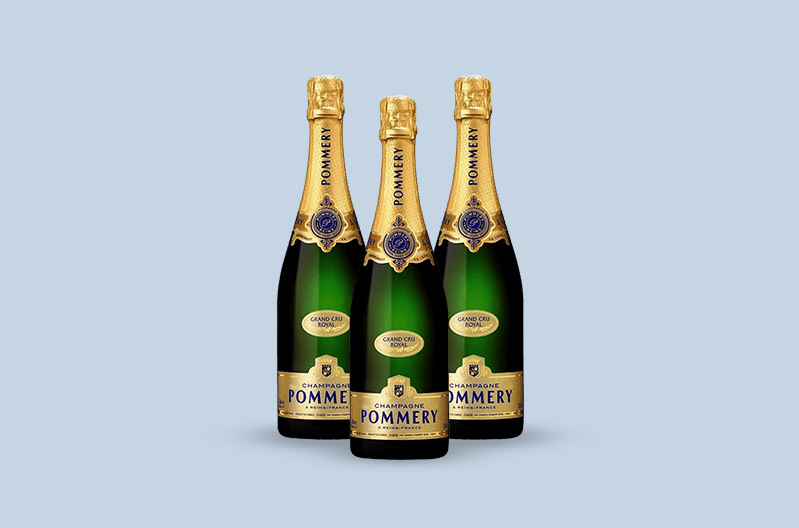Madame Pommery’s winery is renowned for being a pioneer of innovative wine styles and wine-making practices, including the world-famous Brut Champagne launched in 1874. Here’s a quick guide to what makes Pommery Champagne such a sought-after collector’s wine, as well as where to buy Pommery Champagne and storage recommendations.
The history of Pommery Champagne
The Pommery Champagne House (called Domaine Pommery) is located in Reims in the Champagne region of France. In 1860, the visionary Madame Pommery transformed the estate from a wool producer to Champagne, transforming the Gallo-Roman chalk quarries into a 12-mile-long underground cellar that can store up to 20 million bottles.
At the time, Champagne was very popular – but it was quite sweet and acidic. There wasn’t any product that suited a market looking for something different, and that’s what Madame Pommery focussed on. This led to the dry, velvety and cheerfully light Brut that is so popular today, catapulting the winery into stardom.
How is Pommery Champagne made?
To start, the grapes are harvested from 300 hectares of Grand Cru vineyards and fermented onsite. Then, the different wines are blended by the cellar master. The three main wine style produced are:
- Champagne Brut – Pommery Champagne Brut Royal is the iconic flagship of the range and is made by blending nearly 40 different Champagne vintages. It is known for its to refreshing aroma, acidity, and finesse.
- Le Close Pompadour – This is produced from the three Champagne grape varieties – Chardonnay, Pinot Noir, and Pinot Meunier to produce an exceptionally fresh and sophisticated Champagne.
- Cuvee Louise – This blend of three grand crus is a tribute to Madame Louise Pommery, and is produced in Millésime, Brut Nature, and Rose.
The wines are then matured in the chalk cellars at 10 degrees Celsius, with the chalk retaining the correct humidity levels and temperature through summer and winter months.
Sustainability in Champagne
It’s interesting to note that the winery is undergoing development to become more sustainable and environmentally friendly, showing off its well-established tradition of innovative thinking. It became the first wine house to achieve an ISO 14001 environmental certificate in 1996, and the producer (Vranken Pommery Monopole) has won ‘Sustainable Viticulture in Champagne’ and ‘High Environmental Value’ awards since 2014.
In addition, the winery has been working with University of Reims’ champagne wine and vine research laboratory and a sustainable engineering company to develop a natural fungicide and is working on the Neptune Project to improve water management on the estate.
The best Pommery Champagnes to buy
If you would like to buy Pommery Champagnes for your collection, we recommend that you look for the following vintages:
- 1961 Pommery Cuvee Speciale Blanc de Blancs
- 1989 Pommery Cuvee Louise Brut Rose Millésime
- 1969 Pommery Coteaux Champenois Bouzy Rouge
- 2000 Pommery Grand Cru Brut Millésime
- 2000 Pommery Cuvee Louise Brut Millésime
- 2003 Pommery Les Clos Pompadour
- 2004 Pommery Cuvee Louise Brut Millésime
- 2004 Pommery Cuvee Louise Brut Nature
Pommery Champagnes can be matured in storage for about 10 years, with non-vintage bottles lasting 4-5 years. The value of these Champagnes does offer collectors a good return over their lifespan, with a good example being the1989 Pommery Cuvee Louise Brut Rose Millésime increasing by 74% in 15 months (November 2019). Of course, this depends on selling at the right time and ensuring your bottle of this iconic Champagne is professionally stored to ensure its value and flavour.

